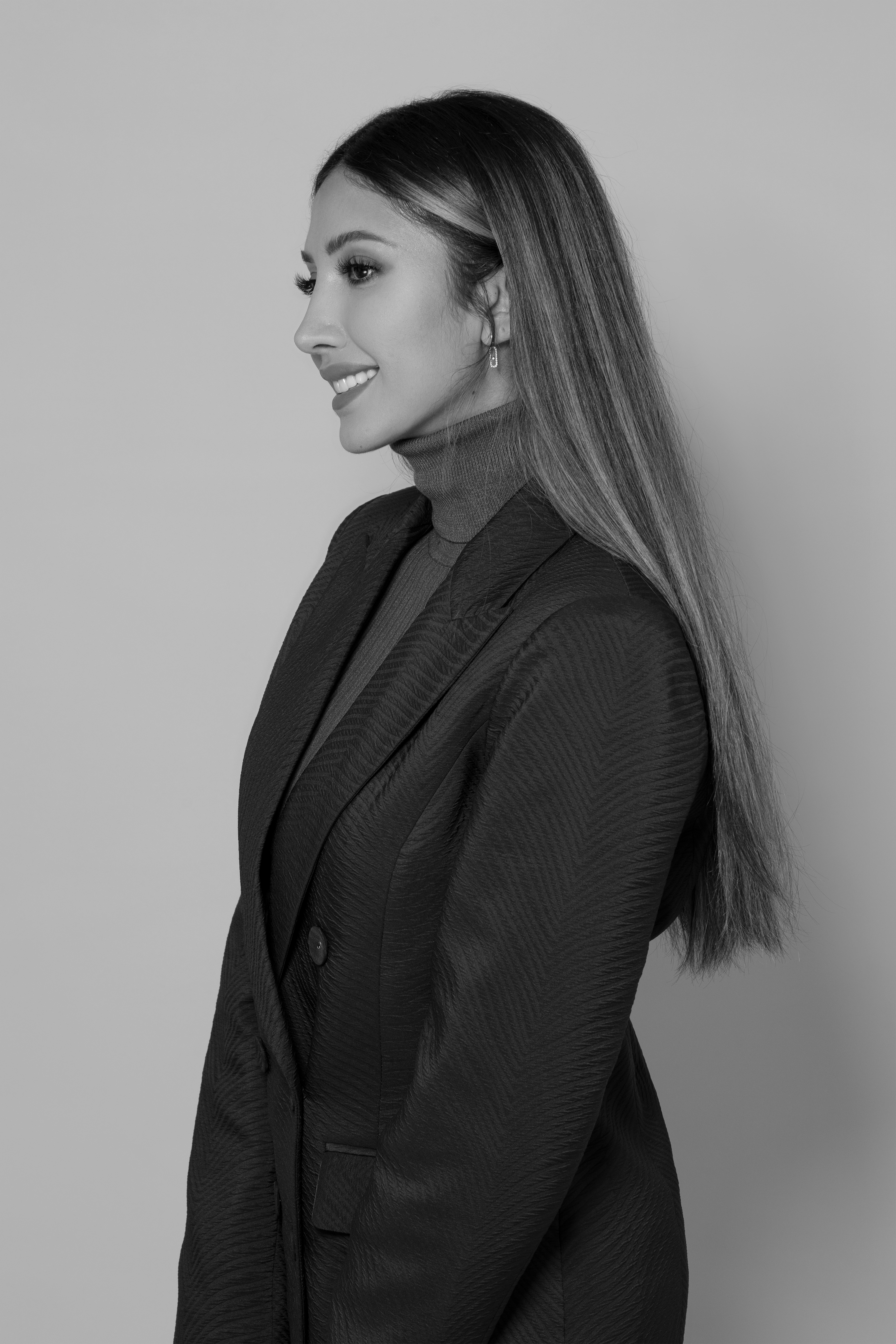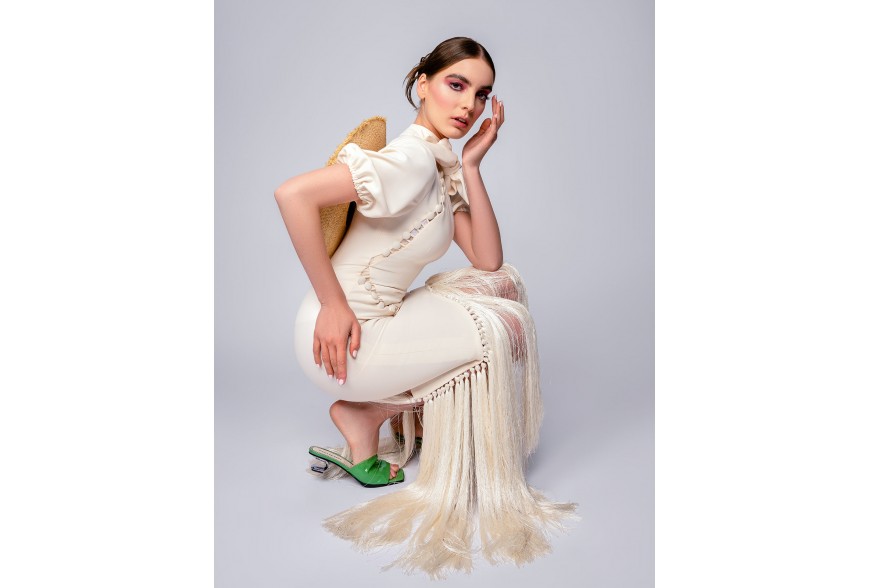The Future of Fashion: Nour Abdul Fashion's Sustainable Vision

"Despite the challenges, we are proud to be one of the few sustainable fashion brands in Kuwait, and we hope to inspire others to join us in this journey."
How did you first become interested in sustainable fashion?
During my senior year in Miami, I took this class where we watched a documentary called 'Blue River'. That's when I saw the impact of fashion and what it does to our planet. I decided then and there that this was the route I wanted to take because I would like to respect the earth while expressing my creativity. It's a fine line. Additionally, I wanted to challenge myself because Sustainability is challenging–it's a process and a journey. Going on that journey and learning more about sustainability was something I was very interested in doing. While growing up, sustainability wasn't a thing.
Furthermore, environmental awareness wasn't as high as in Kuwait. So, I wanted to learn more about Sustainability and bring more awareness to my country. I sought to combine both cultural influences when I moved from Miami to Kuwait, keeping the modesty and cuts of our region but incorporating the message of the "woman of today."
It could fit a woman, whether she's a Western or an Arab woman. I wanted my designs to represent every woman: the conscious woman, the hard-working woman, and the housewife, no matter what she does.
How did moving to Kuwait impact the materials and manufacturing techniques to create your sustainable clothing line?
One of the biggest challenges was the availability of sustainable materials. In Kuwait, there is a limited supply of eco-friendly fabrics and materials, so I had to find creative ways to work around these limitations. I found myself outsourcing some of the materials, especially regarding packaging. But despite these challenges, I was determined to keep Sustainability at the core of my brand.
Thankfully, Kuwait is geographically convenient, with access to materials from nearby countries like India and Egypt. This allowed me access to unique and high-quality materials that I might not have been able to find elsewhere. It also reduced the production time significantly compared to working in the US.
Another challenge was educating the market about the importance of Sustainability. Sustainable fashion was still relatively new in Kuwait, and its benefits were limited. However, I was pleasantly surprised by the response I received from the Kuwaiti community. People accepted me with wide arms, valued my opinions, and expressed excitement at the arrival of something fresh and cutting-edge on the market. They appreciated that I was an Arab woman who had learned about Sustainability overseas and came back with new ideas, cuts, and designs unavailable in the market.
To sum up, moving to Kuwait impacted the fabrics and manufacturing techniques used to produce my sustainable, non-fast fashion business, but it also brought new chances and challenges.
Through perseverance and creativity, I overcame these challenges and created a brand that represents every woman, regardless of her background or profession. By making small changes and taking steps toward Sustainability, we can positively impact our planet and inspire others to do the same.
Can you share an example of a successful collaboration with another brand or artist?
We recently collaborated with Cartier on a Ramadan event, and I am incredibly proud of the outcome. The collaboration was exclusive, featuring a piece I created exclusively for the event and Cartier clients. I am ecstatic that a high-end luxury brand like Cartier is collaborating with a sustainable brand like ours. This collaboration aligns perfectly with our values, and we hope to continue collaborating with like-minded brands and artists.
How did your brand's commitment to Sustainability develop over time?
Our commitment to Sustainability is at the core of everything we do at our brand. When we first started, we realized a significant lack of sustainable options in the fashion industry. We wanted to change that and create a brand that looked good and did well.
Our first step towards Sustainability was to focus on our packaging. We switched to eco-friendly packaging materials, such as recycled paper and biodegradable plastics. But we soon realized that Sustainability went beyond just packaging. We began researching and experimenting with different eco-friendly materials, such as hemp, flax, linen, and organic cotton. We also looked for ways to minimize waste, such as using fabric scraps to create patchwork pieces.
As our brand grew, we wanted to extend our commitment to Sustainability beyond our products. We began collaborating with local artisans and manufacturers to educate them on sustainable fashion practices and encourage them to implement fair trade practices. We believe that Sustainability is not just about using eco-friendly materials but also about creating a sustainable livelihood for the people involved in the production process.
We are proud to say that we have created a brand that prioritizes Sustainability while creating beautiful, high-quality pieces that will last for years. We are constantly striving to find new ways to minimize our environmental impact and promote sustainable fashion practices within the more significant industry.
How has your brand witnessed the evolution of the sustainable fashion industry over the years?
Our brand has been in the sustainable fashion industry for several years, and we have seen a significant shift. When we first started, Sustainability was less prevalent in the fashion world now. However, over the years, we have seen a remarkable increase in sustainable practices among major fashion brands. More and more companies recognize the need to implement sustainable practices and materials in their production process. Even fast fashion giants like Zara and H&M are trying to integrate sustainable practices into their designs. We hope to see more of this positive change in the future. I’m grateful to see the fashion industry changing, to be honest.
How significant is the social and environmental impact of fashion on consumers today?
People are more aware of Sustainability and practicing consciousness. So once Sustainability becomes part of their lives, they implement that into every area. There's a higher consciousness level from a social and environmental perspective. From what we've seen in the last few years, people are a lot more outspoken and aware of fashion practices that are harmful to the environment, that aren't fair to the workers, etc. And all the exposés and documentaries have added to their awareness.
The truth is that fashion is something we deal with daily. Everyone uses and purchases clothing; it is a need for daily life. People are beginning to consciously choose where they spend their money by evaluating the businesses they patronize to determine whether they share their ideals.
How do you communicate the sustainable aspects of your brand to your customers?
Regarding our brand’s message, we mention sustainability as one of our top priorities. We have that written on our website, we say it to our customers directly, and when someone asks us about Sustainability (whether it is related to our brand now or just as a general concept), we try our best to educate anyone listening. However, we are taking steps to express that message more extensively to reach our current and future audiences. It's a journey, not a destination, and we will continue to explore ways for the public to connect the concept of Sustainability with our brand.
What is your favorite Nour Abdul design or collection, and why?
My favorite is the Waves collection, which puts 'Nour Abdul' on the map. I designed most of it during my senior year of college, but two professors kept saying the designs were "physically impossible to sew." Seeing those designs come to life and prove the doubters wrong was incredibly rewarding and ignited a passion to push the boundaries of fashion even further.
For the upcoming designs, we’re bringing back vintage. Be prepared to see a lot of vintage cuts and get them back to life. I'm inspired by the '60s and '70s and their colors and cuts. I also have many more collaborations with local brands and artists in the plans.
How do you stay up-to-date with the latest trends and styles in sustainable fashion?
I'm often asked how I stay up to date with the ever-evolving world of sustainable fashion.
It all starts with a passion for design and a dedication to sustainability. I'm always seeking new and innovative ideas to help push the fashion industry toward a more sustainable and ethical future.
To stay informed, I turn to various online resources, including fashion forecasters, blogs, and sites that offer insight into design and color trends. Pantone and WGSN (Worth Global Style Network) are two of my go-to resources that I'm constantly checking in with.
But it's not just about following the latest trends. It's about getting inspired by new cuts, colors, and materials that can help drive sustainability forward. By staying up to date with the latest developments in sustainable fashion,
How does your brand approach inclusive sizing and diversity in fashion?
At our brand, we believe that everyone deserves access to sustainable and stylish clothing, regardless of their size or background. That's why we proactively approach inclusive sizing and diversity in fashion.
Regarding sizing, we understand that everybody is unique and may not fit into traditional sizing categories. As a result, most of our items are made-to-order, allowing us to tailor our sizing to our customers' needs. We also work with a range of sample sizes during our design process to ensure that our clothing can accommodate a wide range of body types.
In addition, we are committed to promoting diversity in fashion. Fashion should be inclusive and representative of all people, regardless of race, ethnicity, or cultural background. That's why we actively seek models from diverse backgrounds to showcase our clothing in our marketing materials.
Ultimately, our goal is to create clothing that makes our customers feel confident and beautiful, no matter who they are or what size they wear. Inclusive sizing and diversity in fashion are essential components of achieving that goal.
What advice do you have for starting a sustainable fashion brand?
Planning is essential when starting a sustainable fashion brand. Having a clear vision of what you want to achieve and how you will make it happen is important. I started planning my brand during my senior year of college, and I created prototypes of my designs before I returned to Kuwait so that my tailors could replicate them easily.
One piece of advice for those starting is to be patient. Building a sustainable fashion brand takes time, and there will be setbacks along the way. But if you stay focused on your vision and take things step-by-step, you'll eventually make it work.
You can create a successful and sustainable fashion brand with careful planning, patience, and a clear market understanding. Another important factor is identifying what's missing in the market and how to fill that gap. Don't start a brand just for the sake of it; instead, look for opportunities to add value and create something unique.

